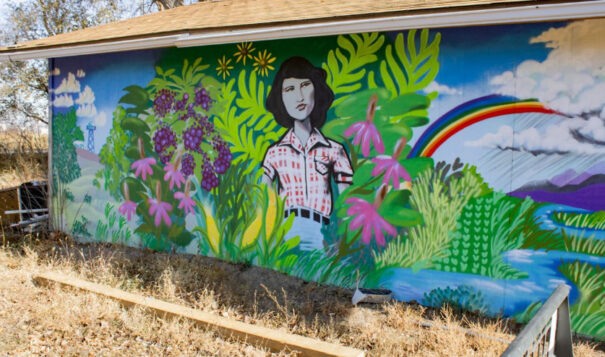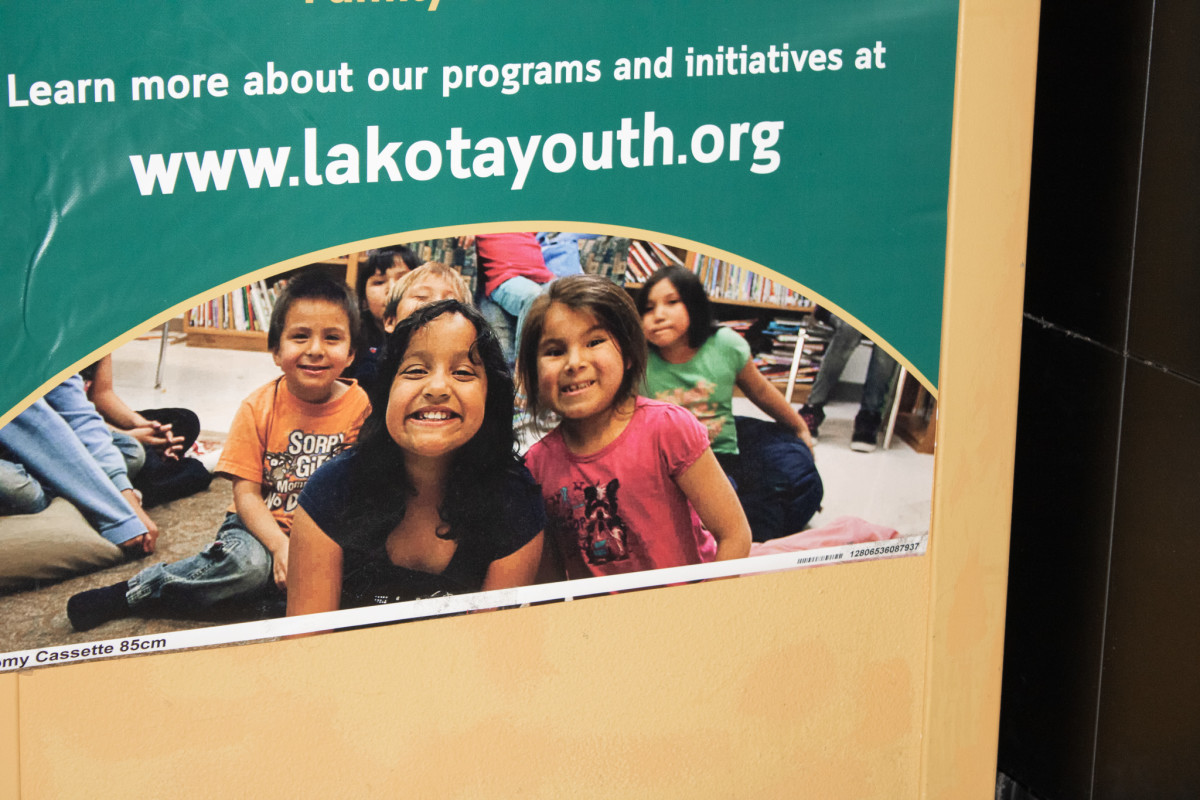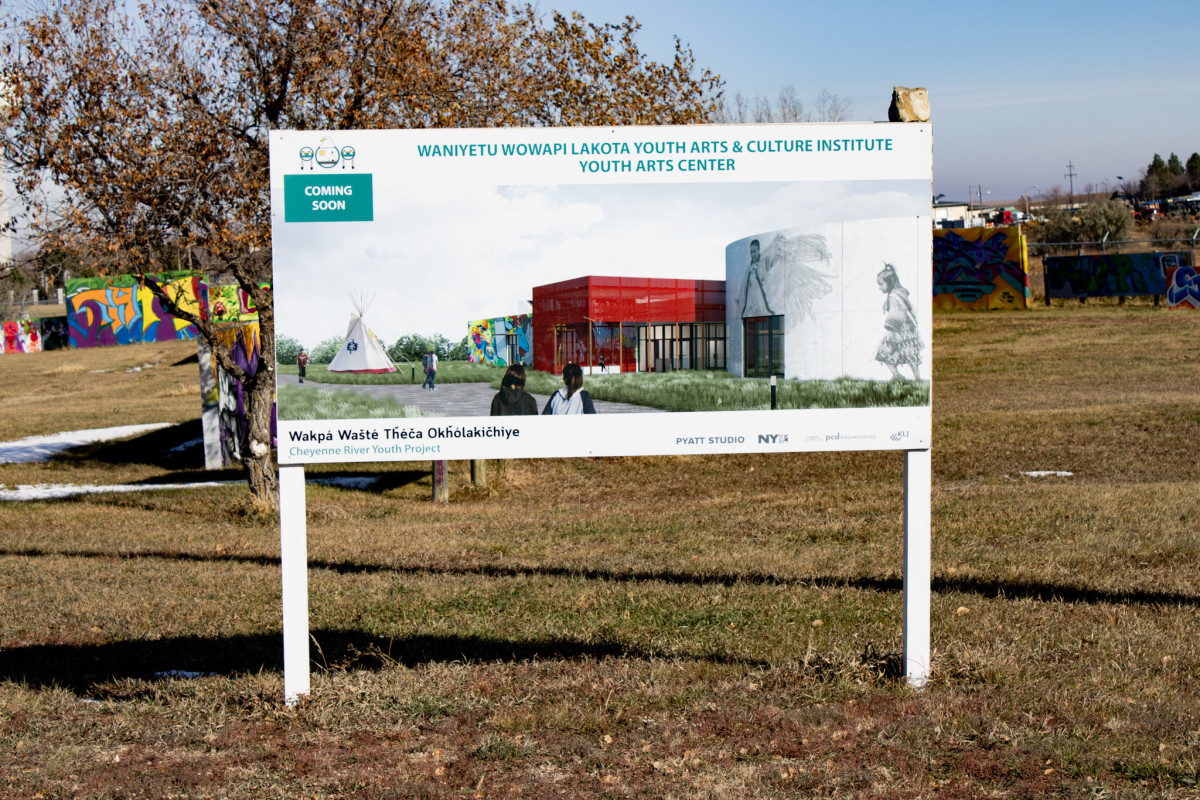News Based on facts, either observed and verified directly by the reporter, or reported and verified from knowledgeable sources.
Cheyenne River Youth Project celebrates 35 years
 An Eagle Butte portrait of Iyonne Garreau, mother of Cheyenne River Youth Project founder Julie Garreau. Iyonne Garreau created the Winyan Toka Win garden in 1975, which is now part of the youth project. (Photo by Amelia Schafer, ICT/Rapid City Journal)
An Eagle Butte portrait of Iyonne Garreau, mother of Cheyenne River Youth Project founder Julie Garreau. Iyonne Garreau created the Winyan Toka Win garden in 1975, which is now part of the youth project. (Photo by Amelia Schafer, ICT/Rapid City Journal)
Established in 1988, the Cheyenne River Youth Project provides youth with a safe space for learning
The idea for the Cheyenne River Youth Project grew from seeds planted in 1975 by founder Julie Garreau’s mother Iyonne Garreau, who had a vision to create a garden to give elders nutritious food. Julie’s vision was to provide an organization to support youth.
In 1988, Julie Garreau, inspired by her mother’s legacy as a public servant, made her own vision come to life. The Cheyenne River Youth Project is a safe space for youth on the 2.8 million-acre Cheyenne River Reservation, built by Lakota for Lakota.
“Our story speaks to what communities can do for themselves,” Garreau said. “If you’re going to do youth work, the investment needs to be forever. We have a lot of kids and we have a lot of need. Nonprofit work is hard but it means something. These people are real and they’re our relatives.”
The original Cheyenne River Youth Project building, affectionately nicknamed “The Main,” was inside an old bar on Main Street in Eagle Butte called The Little Brown Jug. In the 1980s then chairman Wayne Ducheneaux gifted the building to the project. Duchenaux wanted to turn the Main Street building into a positive symbol in the community.
Before the Youth Project, there was little provided for youth on the reservation. The American Indian Religious Freedom Act had passed only 10 years prior to the opening of The Main. Community members were just starting to be able to openly practice cultural traditions, many of which had been forgotten during the boarding school era.
Having an Indigenous-led youth organization was groundbreaking.
“When you look at the history of Indian Country and how the federal government has engaged with us, being sovereign is really important,” Garreau said. “(When sovereign) we’re able to be the decision-makers, to look at our communities openly and honestly and say, ‘This is something we really need.’”
The Cheyenne River Reservation has one of the highest child poverty rates in the nation. Fifty percent of children live below the poverty line, more than double the national average. Teen suicide rates are 3.5 times the national average and nearly 80% of the reservation is unemployed.

“For kids, (the Cheyenne River Youth Project is) really an escape from reservation life. This is a place where kids can come when they don’t have a good home life. They know they will always have a home here,” said Tina Shields, Cheyenne River Lakota.
Shields said she’s been attending the Cheyenne River Youth Project for as long as she can remember. After graduating high school this past spring, Shields began working for the organization as a youth program assistant.
Shields has seen what youth on her reservation experience and how the Youth Project directly impacts the community.
“Things aren’t good here. A lot of kids don’t get taken care of and that’s the sad reality. A lot of kids show up here with ripped clothes and shoes that don’t fit. This place means a lot to the community,” she said.
As a youth, Shields said she worked nearly every internship opportunity offered and saved her earnings for college. Shields is planning on attending United Tribes Technical College next year, where she’ll use the experience she gained at the Cheyenne River Youth Project to aid her.
“I know how to plant a garden, I know how to work with other people, make new friends and be respectful,” Shields said. “I also know more about my own culture because of my internships here. I even know how to make cough drops from scratch.”

One of the project’s major objectives is to provide youth with job opportunities and knowledge that can aid them if they decide to go to school. They offer different courses in financial literacy and planning to help youth become independent adults.
The project offers five different part-time internship programs and one fellowship program to local youth. At the end of the two-week internship program, participants are given money for their work. Since launching the internship program in the 2010s, over 2,000 local teens have completed an internship.
Wakinyan Chief, Oglala Lakota and the Cheyenne River Youth Project arts manager, said he wishes this opportunity was available to him as a teen.
“When I first entered the workforce as an adult, I had no prior experience I could list on my resume,” Chief said. “Through these internships, they’re paid to learn, they develop work skills and experience that they can use for school or jobs.”
Students can work in the Keya Cafe (social enterprise intern), as an art intern, a food sovereignty intern, a Lakota Culture intern, or a Native wellness intern.
“A lot of them end up using their earnings to support their families or to save up,” Chief said.
Chief said his goal is to be the adult role model he needed in his life as a teen. Chief was a troubled teen and said he struggled to find positive outlets and ways to regulate his emotions.
“Doing this work is healing my inner teenager,” Chief said. “I have a lot of shared life experience with them, I learned how to steer them in the right direction.”
Art was a way for Chief to express himself throughout his life. Growing up, he used graffiti as his main form of expression and now closely works with the Cheyenne River Youth Project’s annual Red Can Graffiti Jam organization.
The arts internship program is a two-week course that helps interns find which art form best fits them. After completing the internship, those teens are eligible to be art fellows. The fellowship is a nine-month program that pairs students with different experts in the medium of their choice and opportunities to grow.
The campus has its own garden, Winyan Toka Win, made from Iyonne’s original garden; Winter Count Art Park, an art space; “The Main” child center, named for its predecessor in the old bar; and Cokata Wiconi, the teen center.
“All that we do, we do for the community,” said Wendell Nezzie, Cheyenne River Lakota and a programs assistant.
Nezzie said when he was 16 he would travel from his home outside Faith, South Dakota to Eagle Butte to play basketball at the project with his cousins. Now he’s approaching 10 years spent working for the Cheyenne River Youth Project.
“Kids like being here, they know it’s a safe place,” Nezzie said. “I hear a lot of stories of kids going home and telling their parents and grandparents what they’ve learned.”
Over the past 35 years, things have adapted and changed. The organization withstood a global pandemic, adapting to provide safe ways to still cater to the community’s needs.
The Cheyenne River Youth Project has built its own canning business providing access to traditional foods such as buffalo berries and chokecherries. It’s a crucial figure in the Cheyenne River community.
Produce from the garden is given back to the community. The annual toy drive provides Christmas gifts to families and the Harvest Fest is a gathering and fellowship opportunity. The summers are packed with opportunities for ceremony, dancing, reconnection, and of course, the Red Can Graffiti Jam.
Moving forward, the Cheyenne River Youth Project is planning to construct a new building dedicated to the arts where students can showcase their work and have a separate space to learn.

“I don’t think anything is impossible for us,” Garreau said. “I never really thought about what things would look like 35 years down the road, but all of a sudden here we are and it’s a really exciting time.”
Garreau said she couldn’t have done it alone. The support of her staff, community and friends kept her moving.
“I think the way that everything came together happened pretty naturally,” Garreau said. “I had a lot of partners and a lot of friends that wouldn’t let us fail.”
Dateline:
EAGLE BUTTE, S.D.
